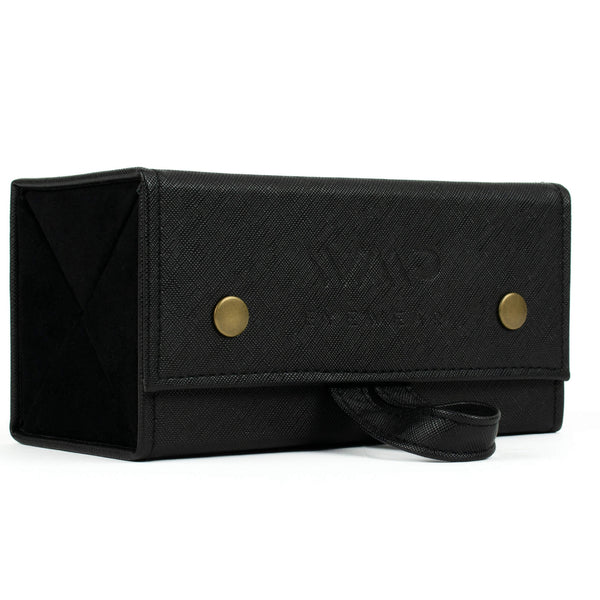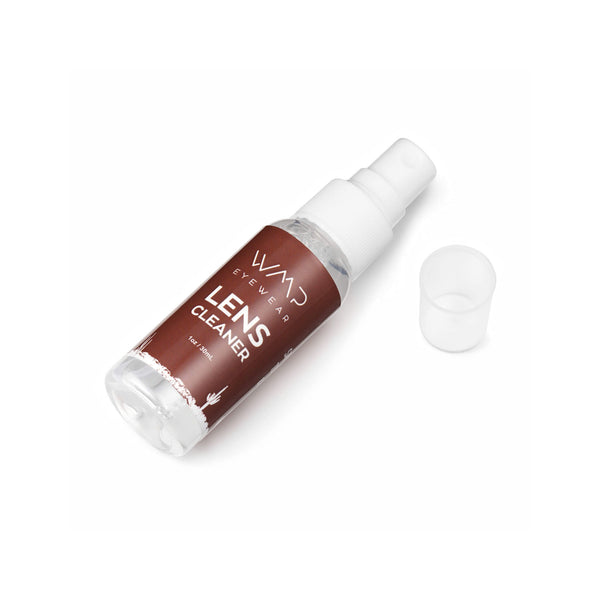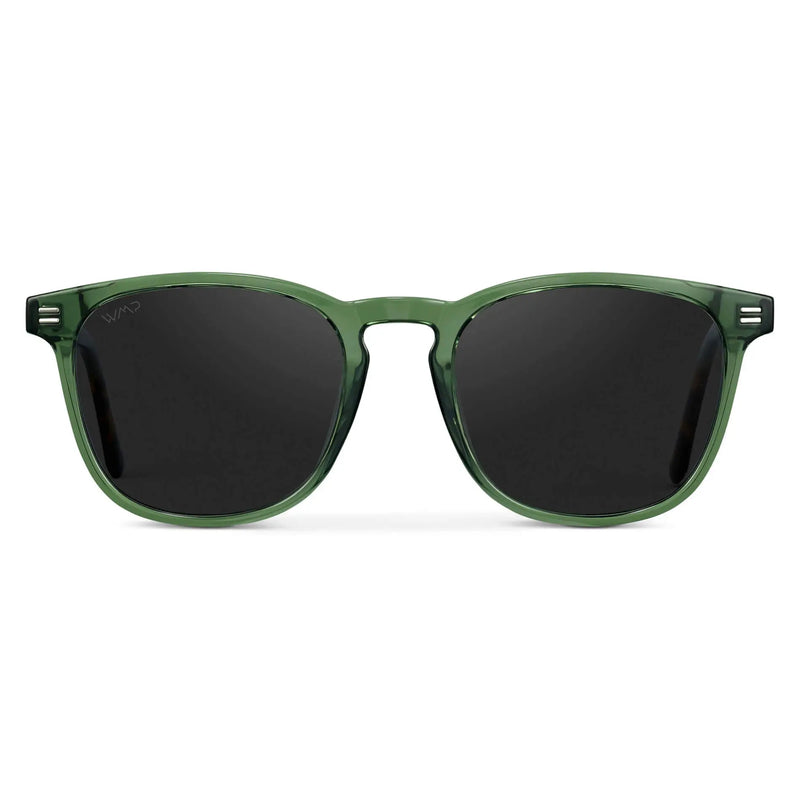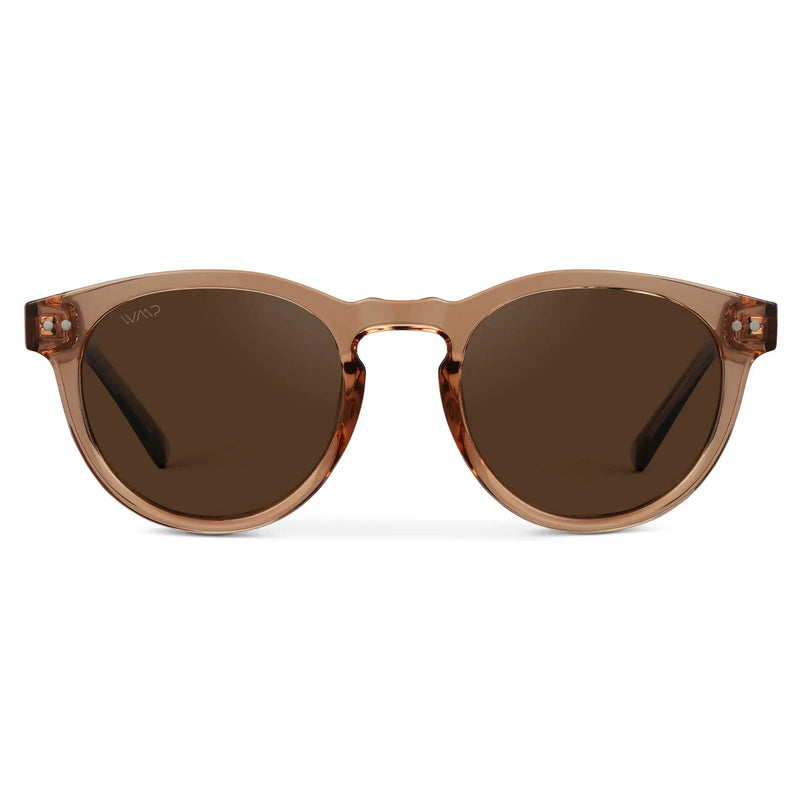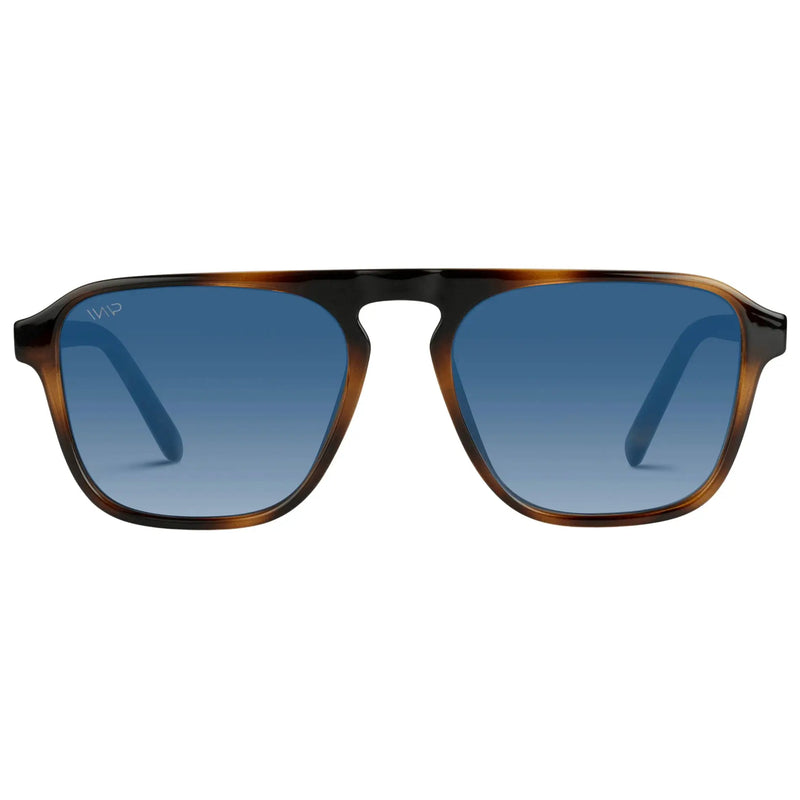Plastic Lens vs Glass – Which One Is Better?

Prescription eyewear like contact lenses and glasses often comes at a high price tag. The average price of a new pair of glasses runs around 200 to 300 bucks. So it’s always a good idea to find ways to save money when shopping for eyewear.
One major place to save is on the style of the lenses. Lenses typically come in either glass or plastic, with plastic commonly found on sunglasses and both plastic and glass found on prescription glasses.
Keep reading to learn more about the differences between glass and plastic so you can decide which works best for your lifestyle.

What Is the Difference Between Plastic and Glass Lenses?
The difference between plastic and glass lenses is how much weight they put on your face. The heavier the lenses are, the more likely they are to feel tiresome by the end of the day.
Another major distinction between the two is how well they hold up to scratches and cracks from falls. Plastic lenses are less likely to shatter, but may not be as scratch-resistant.
Glass Lenses
Glass lenses are outdated and can be tougher to find online. The price ranges from $149 for a simple prescription, or up to $349 for a progressive, lineless bifocal lens.
One of the biggest pros of glass lenses is that they offer greater visual clarity and typically feature less distortion than plastic lenses. Sometimes, glass lenses are thinner than plastic ones because they’re manufactured at a higher index. However, these high-index glass lenses tend to be pricier.
You can add some versatility to glass lenses with features like transition lenses so they double as sunglasses, providing UV protection, and an anti-reflective coating.
A glass lens has more weight and scratch resistance than a plastic lens. If you have nose pads, the weight may not bother you so much but could become tiresome in a pair of frames without them. Glass lenses don’t work in semi-rimless frames, so they limit your fashion options.
The biggest downside to glass lenses is that they’re fragile. Glass does not withstand drops well, so they’re not ideal for things like outdoor activities where you could fall.
Plastic Lenses
Plastic lenses have come a long way, and most eyeglasses are made of plastic. That’s because quality materials including polycarbonate, tri-acetate cellulose (TAC), Trivex®, and high-index 1.67 offer high-impact resistance, making them more durable for everyday use for active adults and children.
These types of plastic materials won’t shatter, so they’re safe to use for any age, and especially great for kids. More expensive plastic options rival glass for optical clarity.
Another factor to consider is weight, as plastic is much lighter on your face. This means you can wear sunglasses and glasses all day and into the night without any soreness or tension on your nose and forehead.
Plus, light lenses mean that you can use plastic in any type of frame. They’re less likely to slip down your nose, so you can wear modern styles without nose pads for a sleek look.
A natural property of plastic is that it’s less reflective than glass, so you won’t get as much glare in your eyes. Plastic is easier to customize as well, so you can add a tint in any color.
While a downside of plastic lenses is that your vision may be slightly worse and they may scratch easier, these two things can be remedied. High-quality plastic lenses offer visual clarity that rivals glass lenses.
Kids are clumsy, and they need better scratch resistance on their glasses. To make plastic work for kids, add an anti-scratch coating so their glasses can be dropped without compromising the lenses. Most adults will likely find this feature helpful too!
What Is Cheaper - Glass or Plastic Lenses?
The cheaper lens for glasses is plastic. Glass lenses start at around $149, while plastic lenses start at $75. Whether you have eye insurance or not could affect the pricing, but you’re more likely to get more with your insurance money if you choose plastic lenses.
If you’re not sure which to get or which is cheaper, make an appointment to talk to your eye care professional about which option is right for you.
What Is the Best Lens for Sunglasses?
The best lens for sunglasses is plastic. Plastic can be tinted in the color that’s best for the situation you need. If you’re driving into the sunset, you want green or gray-tinted glasses that absorb the light, so you don’t squint.
Safety should be a priority with any eyewear. Plastic glasses and sunglasses lenses are more durable and they won’t shatter if you drop them. You can even add a prescription to plastic sunglasses, so they can replace your regular glasses for outdoor use.
Summary: Which Is Better - Glass or Plastic Lenses?
Plastic lenses are better than glass lenses. They offer nearly the same optical clarity, yet are safer for daily use because they are less likely to break if they fall. Plastic lenses start at a cheaper price point than glass lenses and are customizable with tints.
Add qualities like anti-scratch coating or UV protection to make your plastic glasses or sunglasses the best pair you’ve ever had.
Sunglasses and Glasses With Plastic Lenses
If you’re looking for affordable, quality prescription lenses with fashionable frames, then look at modern brands like WMP Eyewear. Their affordable frames don’t come with a costly markup like designer frames, and they even give a portion of every sale to help animals in need.
Prescription Sunglasses - Emerson
For a style that attracts the attention of everyone in the room, check out Emerson. These modern aviators feature a single nose bridge and retro rectangular aviator shape. Add a prescription from an eye exam and you can wear these in lieu of your glasses outdoors.
Prescription Sunglasses - Jaxon
If you lean toward vintage-inspired styles try Jaxon, a reimagined take on the classic horn-rimmed style. Plastic lenses pair perfectly with its half acetate, half stainless steel frame. These shades also come with adjustable nose pads for an easily customizable comfort fit.
Prescription Glasses - Abner
For a pair of light glasses that still have a prescription, look at Abner. With a champagne crystal square frame made from acetate, this retro style will match any outfit. They’re made for long, lightweight wear, so you can have them on all day at the office into an evening out without even noticing that they are on.
Prescription Glasses - Tate
For a classic yet modern look, these circular Tate glasses will never fall out of style. Featuring round-shaped, light crystal brown colored retro frames and plastic lenses, they are a great unisex option. Perfect for a studious look in class while keeping it cool while hanging out with friends.


